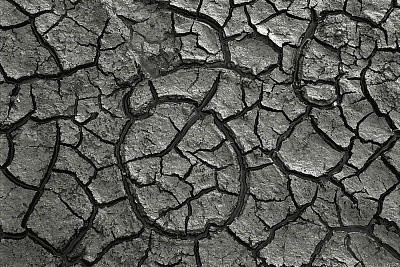What is Acidic Soil?
Soil is classified as acidic or alkaline based on its pH value. pH is basically a measure of the acidity or alkalinity of a solution. Technically, it is the measure of the hydrogen-ion concentration in the soil. pH is measured on a scale of 1-14, with 7 being the neutral mark. If the soil hits any value below 7, it is considered acidic, and any value above 7 denotes alkalinity. Assessing soil pH is very important for farmers and gardeners, as it helps them choose the right kind of plants to grow in their soil. Acidic soils are usually referred to as sour soils, while alkaline soils are referred to as sweet soils.
How does Acidic Soil Form?
Over thousands of years, rainfall robs the soil of basic cations, making it acidic. Rainfall is most effective in this regard when the rain water can travel through the soil rapidly (e.g. sandy soil). The parent material from which the soil is created over thousands of years also plays a major role in determining the soil’s acidity. Soils that are derived from materials like granite are likely to be more acidic than those that are derived from limestone and similar calcareous materials. The parent material’s chemical composition also determines how long it takes rainfall to make the soil acidic.
When organic matter decays, H+ ions are produced, which add acid to the soil. Decaying organic matter also release carbon dioxide, which binds with the water in the soil to form a weak acid called carbonic acid. It is interesting to note that this is the same acid that is produced when carbon dioxide reacts with rain in the atmosphere, resulting in acid rain. Just like the effect of rainfall, decayed organic matter’s contribution to soil acidification is small, and takes many years to show visible results.
Regular harvest of crops also contributes to soil acidity, as crops absorb cations for their nutritional requirements. With each harvest, the soil loses some of the basic material that counteracts acidification through various other processes, resulting in increased acidity.
Effects of Acidity on Soil
In moderately acidic soil, the nutrient cations of many substances such as zinc, aluminum, iron, copper, and manganese are readily available for plant absorption. But, when the acidity of the soil is severe, these elements can be excessive and cause the soil to become toxic. Acidic soils are also more susceptible to souring and putrefaction (decomposition by anaerobic bacteria), instead of undergoing the normal decay processes that are associated with the decay of organic matter (which are extremely beneficial to the soil). Extreme acidic levels in the soil can also exacerbate plant diseases such as clubroot.
Soil Acidification
Some plants thrive in acidic conditions only. Examples include hydrangea, rhododendrons, lilacs, azalea, heather, wintergreen, bayberry, blueberry, kiwifruit, Chinese cucumber, oak, holly, and almost all varieties of roses. Most evergreen plants also prefer acidic soils. If the soil is not naturally acidic, the gardener has to resort to artificial means of lowering the soil’s pH to create an environment that is conducive to the growth of these plants. Soil’s acidity can be increased by adding peat moss, sulfur, iron sulphates, or aluminum sulphate. The result of adding these substances is short-lived. The time taken to acidify soil with sulfur is considerable, as it is a slow acting option. There are many organic fertilizers that increase soil acidity. Also, fertilizers that contain ammonium nitrate, ammonium sulphate, urea phosphate, ammonium phosphates, and mono-potassium phosphate also help to lower soil pH. Adding sawdust, wood chips, decayed vegetable matter, compost, and urea can also help increase soil acidity.
Decreasing Soil Acidity
Many plants prefer neutral to alkaline soils. Steps can be taken to decrease its acidity in order to cultivate such plants. The most common method employed to increase the pH of soil (thus making it less acidic) is adding a form of lime, which is a compound of calcium or calcium/magnesium. It can be applied in the form of ground agricultural limestone, burnt lime, or slaked (hydrated) lime. The smaller the lime particle, the faster its ability to permeate the soil, which makes hydrated lime the quickest performer. Neutralizing soil is a slow process, and should be allowed to happen over the course of a few months.


Comments - One Response to “What is Acidic Soil?”
Sorry but comments are closed at this time.